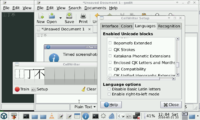levi
Still fresh, damnit!
Bah, NoScript rubs me up. I really like what it does - but it breaks so many sites. Try and whitelist sites, but there's always something, and usually when you're doing a financial transaction, like the credit card verification iframe, as that throws up cross-site scripting errors. In the end, I get pissed off disabling it all the time and uninstall it. :-(
Everyone raves over uBlock Origin, but maybe I did something wrong, because it didn't really do much for me. One thing I do like in Adblock plus is the "Element Selector" (though it does seem to not actually work some times)
Yeah, I've had trouble with credit card verification before I learned what sites I needed to whitelist, but I don't recall having XSS errors for a long time (though I could imagine situations where it could be an issue). I know that dragoxbox's payment process works if you enable the right scripts, as does amazon and many others though. I consider it a worthwhile trade for my security, but your mileage may vary.


